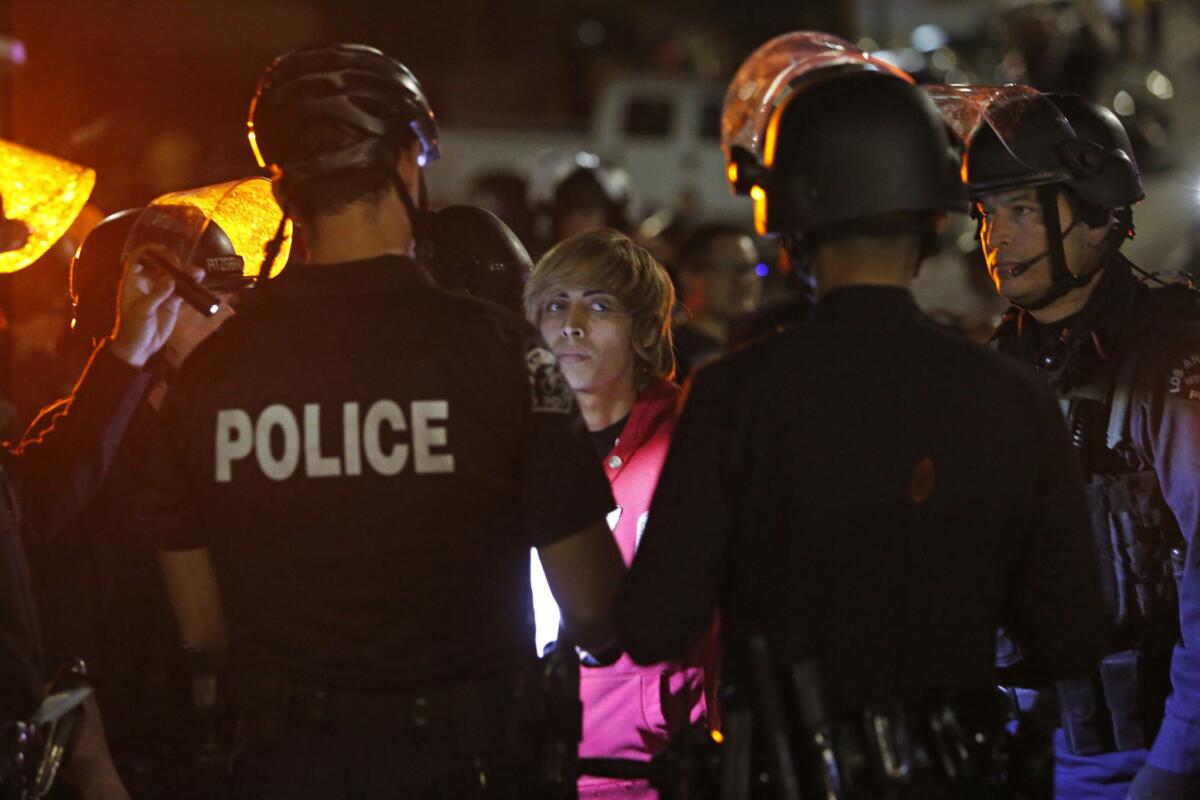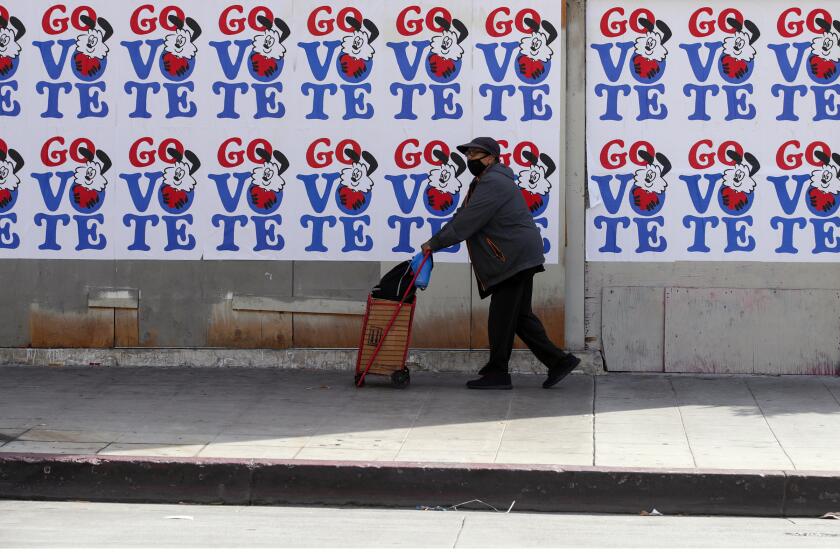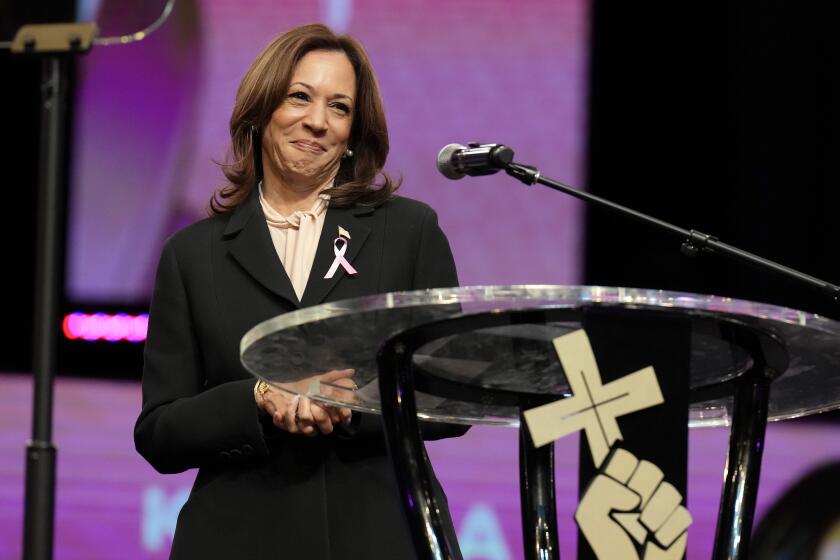Opinion: When is it OK for police to shoot? Depends on if you’re asking a cop or a civilian

In this election season, the volume of letters on the race between Donald Trump and Hillary Clinton has sometimes drowned out robust discussion on other important issues. This week, however, an interesting back-and-forth took place between some of The Times’ letter writers on the topic of officer-involved shootings, portions of which have already been published in the paper.
After retired Los Angeles Police Department Capt. David Dolson explained Thursday why an officer might be justified in shooting a suspect he wrongly believed to have been armed — in response to two readers who wondered why a Long Beach officer wasn’t charged after killing an unarmed man — letters continued to trickle in. Here are some of those responses.
Riverside resident Alan L. Strzemieczny’s defense of police is similar to Dolson’s:
Letter writers James Adler and Charles Martin need a reality check to understand what police are up against. An officer has 1.5 seconds to determine if a person is about to fire on them or run. I suggest the writers obtain two toy pistols and get a friend to participate in a test.
They should take a shooting stance while their friend stands 15 feet away with their back to them with the weapon concealed. Let the friend turn quickly toward them and fire or keep the gun in their waist band. If they turn quickly and fire, they’ll understand what officers face. Try the test multiple times and remember if your friend ties you, you might be dead or severely injured.
Armchair critiques are easy; placing yourself in someone else’s shoes is revealing.
Charles P. Martin of Los Angeles, whose letter prompted Dolson to write, responds:
How about Eric Garner, the unarmed New York man who died after being held in a chokehold by police? How about Tamir Rice, for whom there was no order to drop his toy gun before being shot in less than two seconds?
How about documented cases of white men shooting at police but not getting shot in return? How about the person in San Bernardino who died after being Tasered by officers and whose mother won a lawsuit against the city for more than $600,000? This is a city that has filed for bankruptcy.
Taxpayers are covering the bill that police actions have caused. Please see the whole picture.
Stephanie Yablow of North Hollywood points out the people police must deal with:
Finding out after the fact that a gun was only a toy or that a shooting victim was unarmed doesn’t tell the whole story. Officers do not know what might happen even at a routine traffic stop.
People have lost all sense of proportionality and have no coping skills to get them through life’s inevitable problems; in fact, some expect no turbulence at all, having been raised to believe they are the center of the universe. At the end of the day, you don’t get a gold star for just showing up.
Follow the Opinion section on Twitter @latimesopinion and Facebook
More to Read
A cure for the common opinion
Get thought-provoking perspectives with our weekly newsletter.
You may occasionally receive promotional content from the Los Angeles Times.











